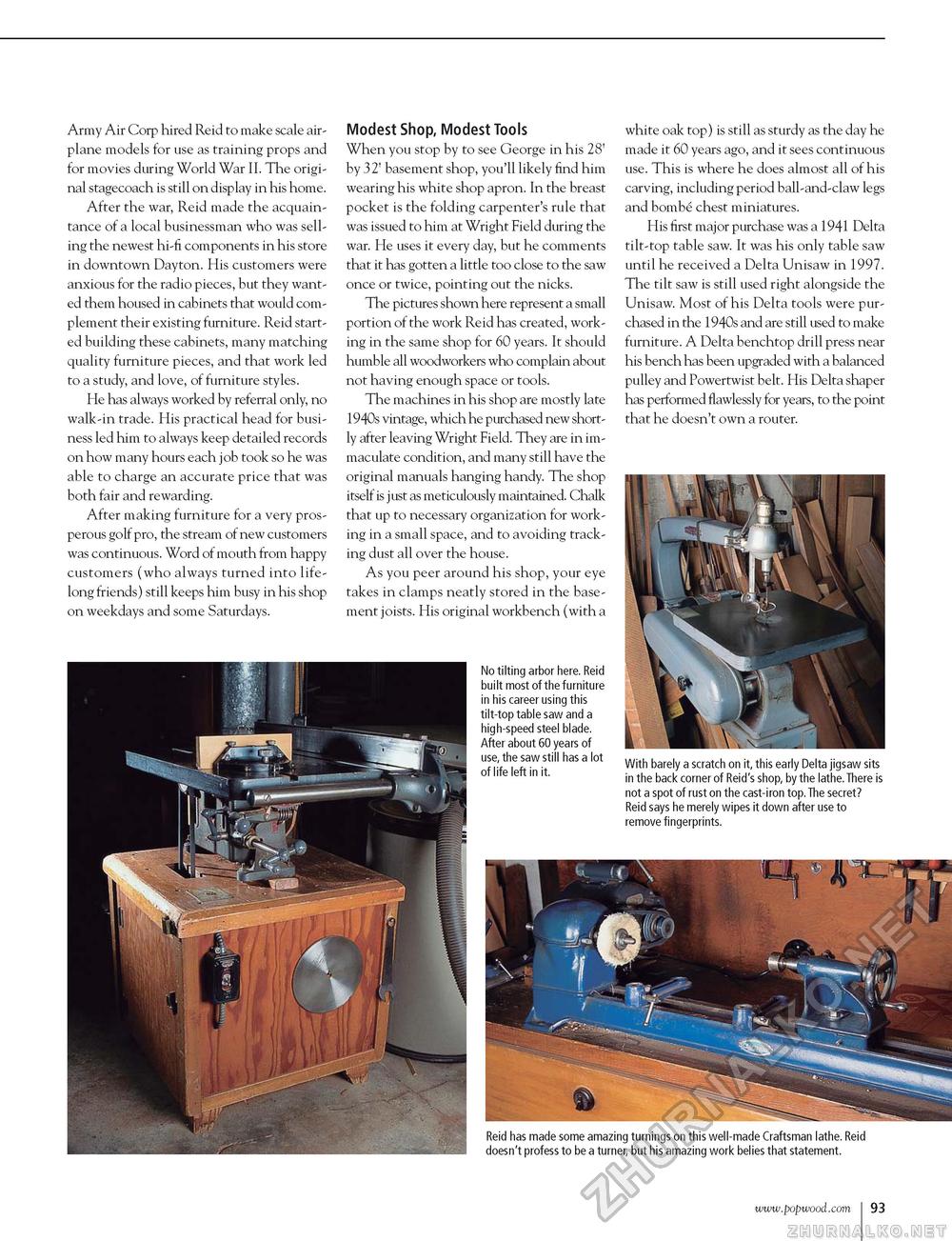Popular Woodworking 2002-12 № 131, страница 88
Army Air Corp hired Reid to make scale airplane models for use as training props and for movies during World War II. The original stagecoach is still on display in his home. After the war, Reid made the acquaintance of a local businessman who was selling the newest hi-fi components in his store in downtown Dayton. His customers were anxious for the radio pieces, but they wanted them housed in cabinets that would complement their existing furniture. Reid started building these cabinets, many matching quality furniture pieces, and that work led to a study, and love, of furniture styles. He has always worked by referral only, no walk-in trade. His practical head for business led him to always keep detailed records on how many hours each job took so he was able to charge an accurate price that was both fair and rewarding. After making furniture for a very prosperous golf pro, the stream of new customers was continuous. Word of mouth from happy customers (who always turned into lifelong friends) still keeps him busy in his shop on weekdays and some Saturdays. Modest Shop, Modest Tools When you stop by to see George in his 28' by 32' basement shop, you'll likely find him wearing his white shop apron. In the breast pocket is the folding carpenter's rule that was issued to him at Wright Field during the war. He uses it every day, but he comments that it has gotten a little too close to the saw once or twice, pointing out the nicks. The pictures shown here represent a small portion of the work Reid has created, working in the same shop for 60 years. It should humble all woodworkers who complain about not having enough space or tools. The machines in his shop are mostly late 1940s vintage, which he purchased new shortly after leaving Wright Field. They are in immaculate condition, and many still have the original manuals hanging handy. The shop itself is just as meticulously maintained. Chalk that up to necessary organization for working in a small space, and to avoiding tracking dust all over the house. As you peer around his shop, your eye takes in clamps neatly stored in the basement joists. His original workbench (with a No tilting arbor here. Reid built most of the furniture in his career using this tilt-top table saw and a high-speed steel blade. After about 60 years of use, the saw still has a lot of life left in it. white oak top) is still as sturdy as the day he made it 60 years ago, and it sees continuous use. This is where he does almost all of his carving, including period ball-and-claw legs and bombe chest miniatures. His first major purchase was a 1941 Delta tilt-top table saw. It was his only table saw until he received a Delta Unisaw in 1997. The tilt saw is still used right alongside the Unisaw. Most of his Delta tools were purchased in the 1940s and are still used to make furniture. A Delta benchtop drill press near his bench has been upgraded with a balanced pulley and Powertwist belt. His Delta shaper has performed flawlessly for years, to the point that he doesn't own a router. With barely a scratch on it, this early Delta jigsaw sits in the back corner of Reid's shop, by the lathe. There is not a spot of rust on the cast-iron top. The secret? Reid says he merely wipes it down after use to remove fingerprints. Reid has made some amazing turnings on this well-made Craftsman lathe. Reid doesn't profess to be a turner, but his amazing work belies that statement. |








